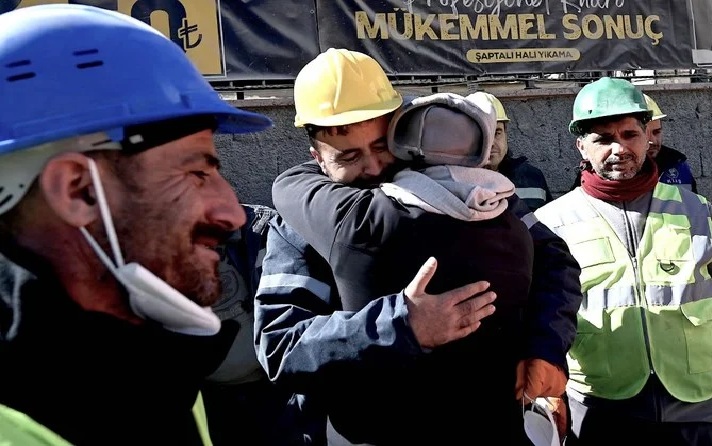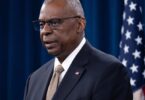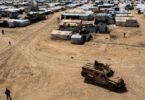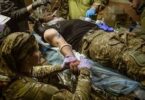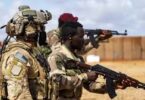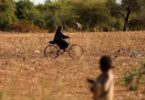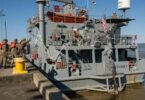KAHRAMANMARAS (Reuters): Turkish rescuers on Thursday pulled a 17-year-girl from the rubble of last week’s devastating earthquake, as hopes fade of finding more survivors.
Aleyna Olmez was rescued 248 hours after the 7.8-magnitude quake flattened entire cities, killing nearly 40,000 people across southeastern Turkiye and parts of Syria.
“She looked to be in good health. She opened and closed her eyes,” coal miner Ali Akdogan, who took part in the rescue effort, told AFP in Kahramanmaras, a city near the quake’s epicenter.
“We have been working here in this building for a week now… We came here with the hope of hearing sounds,” he said.
“We are happy whenever we find a living thing — even a cat.”
The girl’s uncle tearfully hugged the rescuers one by one, saying: “We will never forget you.”
But after the rescue, Turkish soldiers told the media and locals to leave the scene because teams were starting to pull corpses out of the rubble.
While several people were also found alive in Turkiye on Wednesday, reports of such rescues have become increasingly infrequent. Authorities in Turkiye and Syria have not announced how many people are still missing.
Millions of people are in need of humanitarian aid after being left homeless in near-freezing winter temperatures.
In the Turkish city of Kahramanmaras, a photo of two missing boys had been tied to a tree close to the block of flats where they lived.
“Their parents are deceased,” said earthquake survivor Bayram Nacar, who stood waiting with other local men wearing masks as an excavator cleared a huge pile of shattered concrete and twisted metal rods behind the tree.
He said the bodies of the boys’ parents were still under the rubble. “The father was called Atilla Sariyildiz. His body is yet to be found. We are hoping to find the parents after the excavators remove the debris.”
More than 4,300 aftershocks had hit the disaster zone since the initial, Turkey’s Disaster and Emergency Management Authority (AFAD) said.
AID CONVOYS
The Syrian government has declared the death toll in territory it controls as 1,414, saying this is the final tally.
The bulk of fatalities in Syria have been in the rebel-held northwest, but rescuers say nobody has been found alive there since Feb. 9 and the focus has shifted to helping survivors.
With much of the region’s sanitation infrastructure damaged or rendered inoperable, health authorities face a daunting task in trying to ensure that people now remain disease-free.
The aid effort in the northwest has been hampered by the conflict and many people there feel abandoned as aid heads to other parts of the sprawling disaster zone.
The World Health Organization (WHO) said on Wednesday it was particularly concerned by the welfare of people in the northwest, where some 4 million people were already dependent on humanitarian aid before the earthquake struck.
Aid deliveries from Turkiye were severed completely in the immediate aftermath of the earthquake, when a route used by the United Nations was temporarily blocked.
Earlier this week, Syrian President Bashar Al-Assad granted approval for two additional crossings to be opened for aid – more than a week after the earthquake. The WHO has asked him to give approval for more access points to be opened.
As of Thursday, 119 U.N. trucks had gone through the Bab Al-Hawa and Bab Al-Salam crossings since the earthquake, a spokesperson for the United Nations Office for the Coordination of Humanitarian Affairs said.
The aid comprised of food, essential medicine, tents and other shelter items and cholera testing kits, given the area is still witnessing a cholera outbreak.
Britain said on Wednesday it was issuing two new licences to make it easier for aid agencies helping earthquake relief efforts to operate in Syria without breaching sanctions aimed at the Assad government and its backers.

